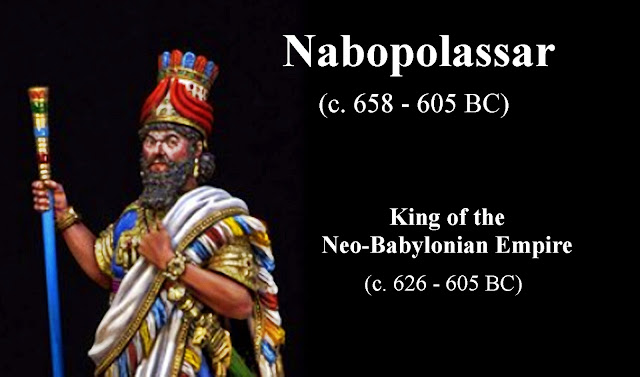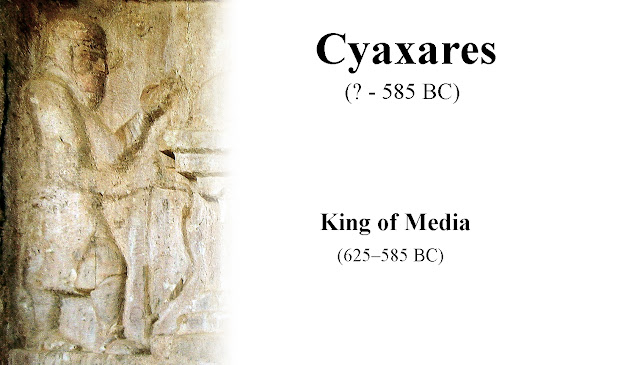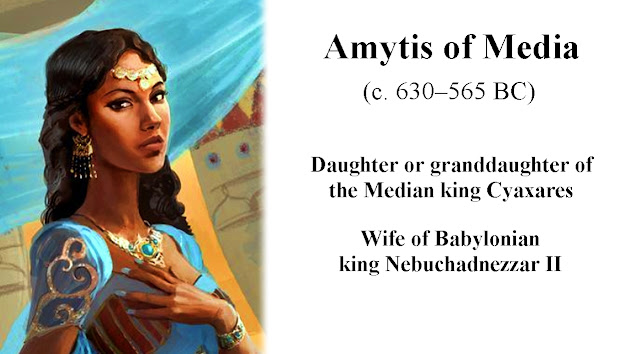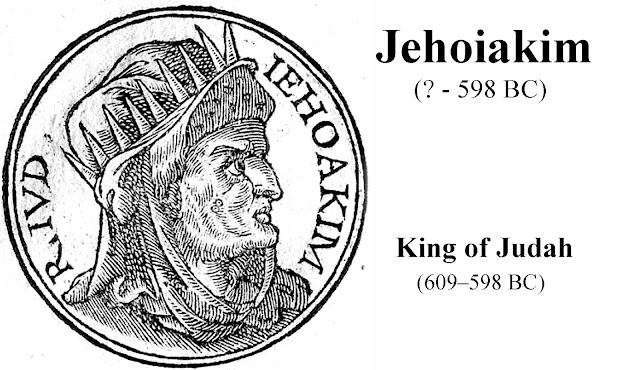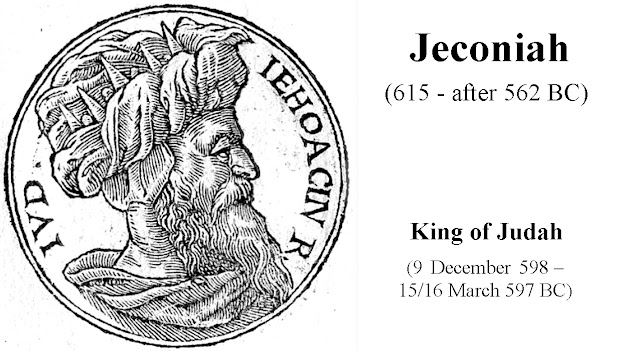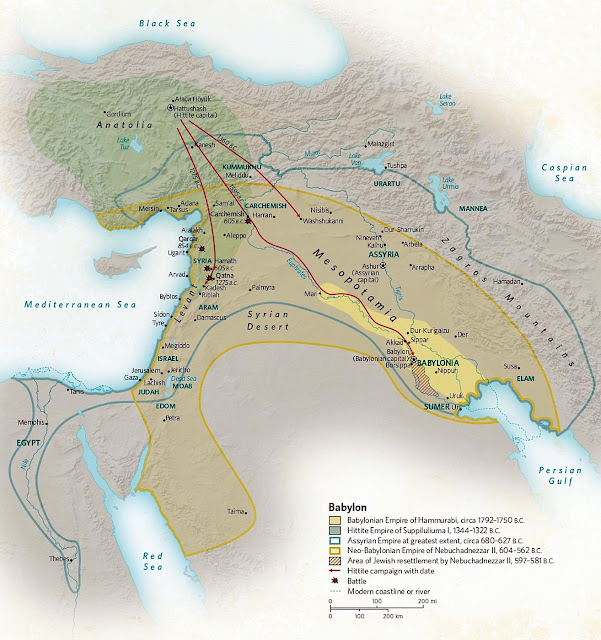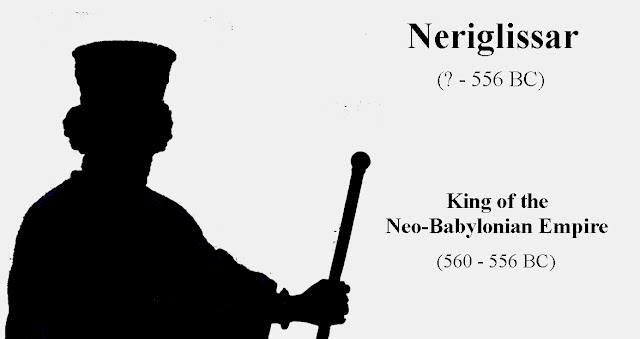Tuesday, April 11, 2023
Neo Babylonian Empire during the reign of Nebuchadnezzar II
Nebuchadnezzar II was the longest-reigning and most powerful monarch of the Neo-Babylonian Empire. His father Nabopolassar was an official of the Neo-Assyrian Empire who rebelled in 626 BC and established himself as the king of Babylon.
After crushing the last resistance of the Assyrian Empire between 612 and 609 BC, the now-aged Babylonian king Nabopolassar (626-605 BC) entrusted the direction of military operations to his eldest son, Nebuchadnezzar, who had already fought in the war against Assyria, conducted with the support of the Medes. As part of his father's policy, he married Amytis, the daughter (or granddaughter) of the Median king Cyaxares, for whom he later built the Hanging Gardens of Babylon.
After the victory against the Assyrians, Nebuchadnezzar led the Babylonian armies into Syria where the Egyptian army penetrated to try to dominate the region in place of the fallen Assyrian empire. It took him two years to consolidate his conquests, then in 605 BC, he crushed the coalition around Egypt in the Battle of Carchemish, then subdued the coastal kingdoms, including Judah. He returned to Babylon at the death of his father.
As soon as he takes power officially, Nebuchadnezzar returned to the shores of the Mediterranean, where the sovereign of Ascalon has rebelled and where he also wanted to assert his dominion over the sovereigns of the kingdoms of Phenicia, and also the king of Judah. But Egyptians were still powerfull in the region and supported these kingdoms. In 601 there was a clash between the Babylonians on one side, and the Egyptians and their allies on the other. Nebuchadnezzar suffers a defeat, and retreated to his fortresses in Syria.
He carried out some attacks in Arabia the following year. Then he returned to the Levant to receive the tribute of the rulers of the region. King of Judah, Jehoiakim, refused to pay and suffered repercussions: his capital Jerusalem was besieged and then taken in 597, he lost his life, and his son Jeconiah and the other notables and scholars of the kingdom were deported to Babylon.
To better control the area, Nebuchadnezzar built a fort in Riblah, Lebanon. But this does not prevent local kings from continuing to revolt, and from being the main concern of the sovereign. There was a serious rebellion in Babylon itself in 593, quickly crushed.
In 589 BC, the Egyptians seize Gaza, and besiege Tyre and Sidon. Then they form a coalition with the Phoenicians, to which Zedekiah, the new king of Judah, joins. Nebuchadnezzar II came back to Riblah, from where he prepares his counterattack. He besieged Jerusalem in 588, and after about two and a half years of siege, the city fell. The sons of Zedekiah are slain, while he is mutilated and deported to Babylon with the majority of the elites of his kingdom. Jerusalem is then plundered and razed to the ground.
At the same time, Nebuchadnezzar's army besieged Tyre. This fortress was much harder to conquer, and it took thirteen years to Nebuchadnezzar II to bring his troops into the city.
In 585, the Babylonian king arbitrated a conflict between his ally, the Median king Cyaxares and King Alyattes of Lydia, and took the opportunity to seize some cities in Cilicia. Shortly thereafter, Judea rebelled again in 582, forcing the Babylonians to return. The situation in the Middle East calmed down only in 568, when Nebuchadnezzar II chased away the Egyptians near Gaza.
Nebuchadnezzar continued the immense works of restoration and embellishment of Babylon initiated by his father: the Marduk shrine, the ziggurat, a large number of temples in the city, the reconstruction of the enclosure with two parallel walls, the Ishtar Gate, and many others.
He enlarged the royal palace (including in it a public museum, possibly the world's first), built and repaired temples, built a bridge over the Euphrates, and constructed a grand processional boulevard (the Processional Way).
The hanging gardens, whose construction is attributed to Nebuchadnezzar, which were not found during the excavations, could have been located in Babylon, if they actually existed.
Outside Babylon, Nebuchadnezzar undertook works in the other major cities of Babylonia, where he restores the walls and especially the sanctuaries: his work is attested in Sippar, Borsippa, Akkad, Kish, Dilbat, Uruk, Larsa, Ur, etc. He also worked on the construction or restoration of canals for irrigated agriculture in Lower Mesopotamia, thus contributing to the reorganization and expansion of the agricultural economy in this region.
The administrative structure of the Babylonian Empire was largely shaped by that of the Assyrian Empire, which it replaced. Nebuchadnezzar relied on a group of aristocrats, with the highest administrative and military duties, such as Neriglissar, a general and governor who married his daughter, Kashaya, and who ascended the throne shortly after his death. Nebuchadnezzar's army remains poorly known and does not seem too different from that of Assyria.
The end of the reign of Nebuchadnezzar II is obscure. We know that he died in 562 BC in Babylon, probably because of an illness. After the death of Nebuchadnezzar II, the empire is characterized by chronic instability manifested by two coups in 560 and 556 BC.
His son Amel-Marduk did not remain on the throne for more than 2 years before being overthrown by Nebuchadnezzar's son-in-law, Neriglissar. However, the empire inherited from the conquests of Nebuchadnezzar and his father is not dislocated, which seems to testify the strength of their political construction.
In 539 BC, Cyrus II seized Babylon, marking the replacement of the Neo-Babylonian Empire with the Persian Empire.

